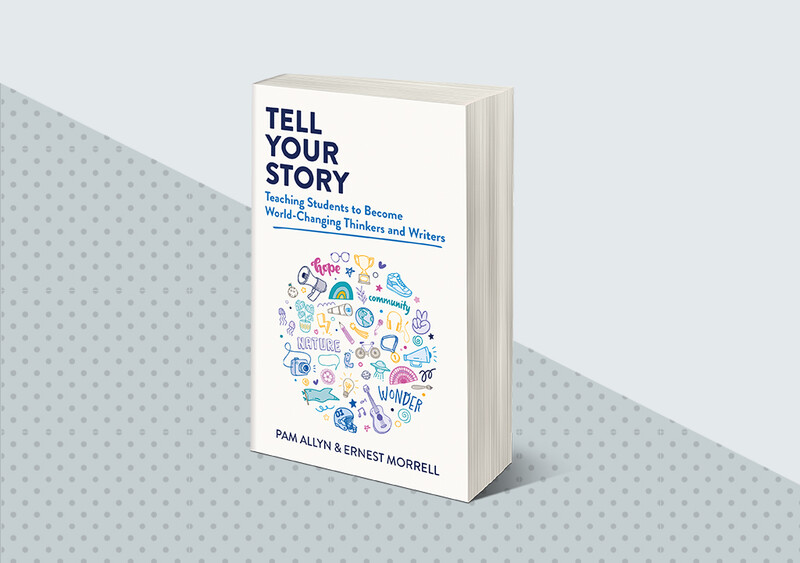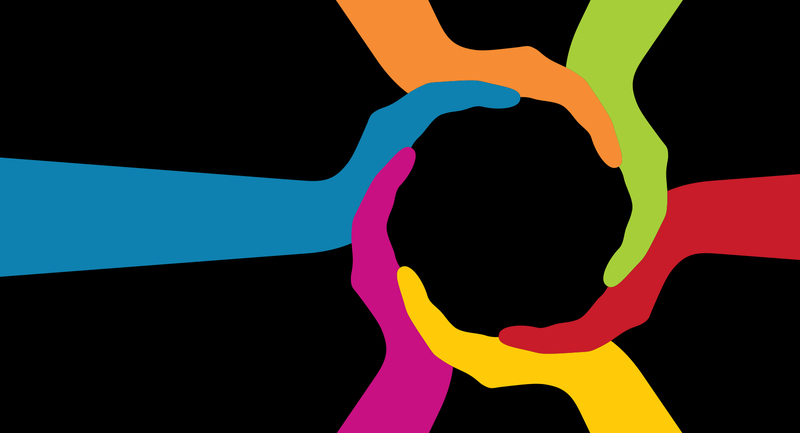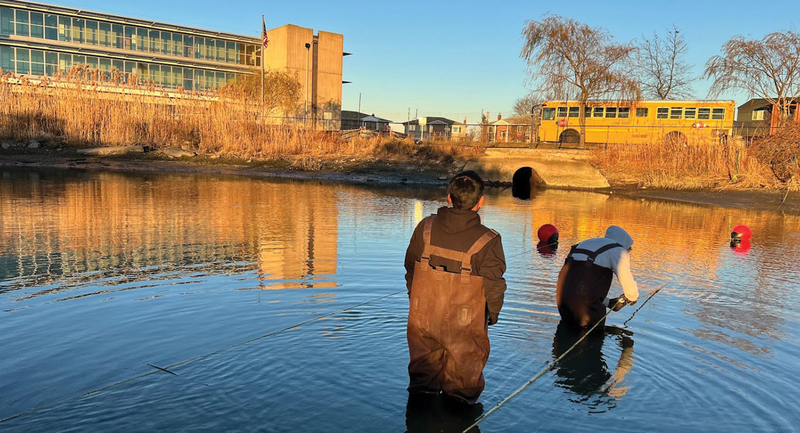Literacy empowers young children to understand their world and express themselves within it. Through these early experiences, they begin to discover their passions and develop their sense of self. These foundational years of literacy learning create ripples that shape children’s education journeys.
Studies show that children’s language comprehension at age 3 predicts reading performances at age 7 (Flax et al., 2008). Young children who practice critical thinking skills, integrate new vocabulary, explore questions about characters, and actively wonder about what they read are developing crucial comprehension abilities. Like exercising a muscle, this early cognitive work strengthens their capacity for more complex comprehension tasks later. These foundational experiences help them “develop phonological awareness, alphabet knowledge, and print awareness, which are skills associated with future reading and writing proficiency” (Hall, 2019).
Over the last few years, educators have witnessed a shift toward a greater appreciation of the value of early literacy skills on a child’s longer-term academic success. I’ve seen this firsthand in my work leading multilingual trainings for early childhood educators during the launch of Pre-K for All, New York City’s universal preK initiative. In fall of 2014, my team provided intensive 12-hour training sessions to teachers working with over 30,000 four-year-olds. Teachers were given serious time to study, research, and engage in best practices in early literacy.
My professional development team focused on core areas of early literacy, training teachers how to read aloud intentionally, to actively reread, and to model reflective reading with their students. We demonstrated the power of bringing early writing into play spaces by inviting students to write notes to classmates, create stories for their stuffed animals, and make signs for their block structures and pretend play areas. We encouraged them to see the multilingual learner as a superhero in language and created opportunities for them to retell family stories in their home language and then act them out in English.
The program’s impact has been significant. When evaluated in 2020, 3rd graders who had attended Pre-K for All performed better on standardized tests than students who did not attend. Moreover, the achievement gap between white students and Black and Hispanic students decreased for those who attended the program (Wallack, 2023).
The spaces between the stepping stones of reading, writing, and language development have closed.
PreK programs, once an afterthought or seen as an “extra” in the world of education, have simultaneously become more academically minded and more centered on child exploration. This dual focus has reshaped how educators approach early learning, blending academic rigor with joyful, exploratory practices. Examples of this shift include developmental spelling, which allows young learners to experiment with language and make sense of phonics at their own pace, and celebrating mistakes as evidence of learning, helping children develop critical thinking skills and explore new ideas. Through practices like rereading books and finding multiple ways to make meaning, children develop self-reflection and analytical thinking skills while engaging with content that celebrates their lives and interests.
This combination is truly transformational. The spaces between the stepping stones of reading, writing, and language development have closed. Students who thrive in literacy early on begin to see themselves as capable, powerful voices in their own stories and communities (Gray-Lobe, Pathak, & Walters, 2022).
Breaking the “3rd Grade Barrier”
Today, we’re on the precipice of a literacy instruction renaissance. This shift has been sparked by the effects of the COVID-19 lockdowns, where children missed a great deal of in-person learning. Between 2019 and 2022, the average reading score on the National Assessment of Educational Progress (NAEP) decreased by three points for both 4th and 8th graders (NAEP, n.d.). This decrease demands a solution: meaningful early childhood literacy instruction.
Educators are now seeking new ways to break the “3rd grade barrier” of achieving grade-level literacy that research indicates is essential to future academic and social success (Fiester, 2010). Studies show that students who receive nuanced preK instruction—which includes research-based curriculums and sufficient learning materials like books—are “29 percent more likely to be rated as ‘exceeding standards’ in reading” compared with students who haven’t had access to such programming (Bakken, Brown, & Downing, 2017). This awareness is helping to promote a focus on providing foundational reading and writing skills, combined with playful, joyful, and secure experiential learning for children long before they reach 3rd grade.
Every young child can become a literacy superstar.
The day is coming when we’ll expect children to be reading and writing by the end of kindergarten. More parent and caregiver education, as well as the implementation of state- and city-level early childhood programs, are crucial steps in this direction. Conversations about early literacy—as well as a move in the United States to put forth funding and care for the youngest of learners—have illuminated the advantages of this approach. Every young child can become a literacy superstar.
Ensuring Early Literacy Success
Here are four things I’ve learned from observing the power of investing in early childhood literacy.
1. Amplifying literacy skills early on must include teaching writing while enhancing reading skills.
It’s never too early to lay the groundwork for proficiency in structure, conventions, craft, and fluency. As our young students engage in the magic of connecting sounds and letters, building meaning and purpose, practicing print fluency, and using their powers of storytelling, they are practicing and enjoying an early love for all these skills that will stay with them for years to come.
Young children can build sound-symbol knowledge that serves as the cornerstone for foundational literacy skills—and experience joy while doing so. We need structures that feed the flame of this learning joy, giving students the chance to author, share, and participate in their own literacy journeys. We need structures in which phonics and phonemic development are vital in building meaningful literacy skills, and where it’s not a choice of either/or—either play or learning, either phonics or meaning-making, either oral literacy or written literacy—but an embrace of both every time.
Literacy educator Ernest Morrell and I developed a framework for writing instruction called The Allyn & Morrell 4 Keys. The 4 Keys—sounds and letters, print fluency, meaning-making, and the power of story—bring foundational writing skills to the forefront of learning:
Sounds and letters. Students use active phonics as a tool for advancing writing skills.
Print fluency. Students practice handwriting, letter formation, and spelling to write correctly.
Meaning-making. Students build knowledge and form ideas using writing.
The power of story. Students create stories and explore genres to produce writing for various purposes.
These keys show that writing is the active form of literacy.
Although phonics is often relegated to reading instructional time, we have always known it to be a conduit for writing skills. By writing often, young students become adept at hearing sounds, seeing words, and making meaning in active ways. The missing ingredient in many literacy experiences for young children is meaningful writing practice. That means that children are writing every day across many genres: from poetry to nonfiction to their “own” stories, the narratives of their lives. They share their stories with their families and friends; they practice stretching the sounds of words and letters because they have something to say. This is the beautiful fabric of early literacy learning, and young students can weave this fabric themselves, one story, one word, and one sentence at a time. Children have an innate ability to interpret stories and relate them to their personal experiences, accelerating their vocabulary development while broadening their understanding of the world.
2. Taking play seriously helps young children build narrative thinking skills.
Children play to make sense of the worlds around them and within them. They play to experiment with existing in the world, being independent, and connecting emotionally and intellectually with problem solving. Play gives children the agency to change the story, to enhance it, to make it real, and to make waves in a world they don’t yet have much influence in. Within the world of play, they can exert tremendous power over beginnings, middles, and endings. Play is the natural way children interact with the world, so it’s only fitting that play is crucial in learning and retention (Liu et al., 2017).
It’s not a choice of either/or—either play or learning, either phonics or meaning-making, either oral literacy or written literacy—but an embrace of both every time.
The excitement of dreaming up a character or crafting an imagined world makes literacy an experience that is joyous, safe, and infused with playful wonder. These experiences not only are fun but also embed phonemic awareness and narrative skills deep within young developing minds (Rand & Morrow, 2021). I watch as my students build forts and block castles, do their industrious “work” in housekeeping corners, and create worlds of family and friends in their pretend time—this all counts as literacy.
3. Building teachers’ professional knowledge of literacy is transformational for both the teacher and their students.
Professional development for early childhood educators has taken significant strides since the days of classroom management and basic health and safety. Many early learning educators now have access to training that blends evidence-based science of reading strategies with creative approaches, equipping them to make literacy instruction both structured and joyful. Students learn that stretching sounds is an active way to be a phonics genius. It enables them to make their own rhymes and chants and write their own stories as they absorb the rules of language. Children can make extraordinary leaps when they’re empowered to integrate play, storytelling, rhyme and song, and writing into their literacy blocks. It’s exciting to see early childhood educators become classroom-based researchers and observers of their children as learners.
4. Decodable stories promote writing and reading in early learners.
Decodable texts have become widely recognized as the foundation for establishing a strong literacy toolkit. Rooted in the science of reading, these texts begin by targeting specific phonics skills (such as reading short a vowel sounds, ch digraphs, beginning blends, r-controlled vowels, and -dge ending blends) and progressively increase in complexity. The text offers a step-by-step trail or map that ensures students master the art of decoding before advancing to more complex literary tasks. With the widespread introduction of decodable stories, early learners are connecting phonics, phonemic awareness, decoding, and vocabulary in new and innovative ways.
Beyond the mechanics of reading, decodable texts can also help children see themselves as writers from the very beginning. Because these texts are predictable, students can focus on a specific skill at a time, steadily learning the rules that govern the English language. Power words that break the rules (like knight with its silent k) only appear at measured intervals in the stories so they don’t overwhelm or discourage a learning reader. As students become familiar with various skills and with the words they encounter in their texts, they become emboldened to use them in their own writing, demonstrating that reading and writing develop hand-in-hand.
What Educators Can Do
As educators of young children, there are four lessons to be learned here. One, we must keep play as a central core of our learning and teaching work because it’s the key to unlocking the magic of literacy. Two, literacy is multifaceted: Reading is breathing in, and writing is breathing out; writing is the other half of breathing the world of knowledge and connection. Three, we need to embrace what might appear as mistakes or imperfections, recognizing them as children’s natural experiments with language development. Early literacy is playful and messy and will look that way. The messiness is part of its magic. With flexibility, “errors” become the seedbed of lifelong learning, and the practice does become, well, perfect!
The fourth and final lesson is this: When we connect play with learning, see young children as messengers for the future, and recognize how joy spurs growth, we know we’re raising readers, writers, and thinkers who will be successful in all they hope and dream to do.
Reflect & Discuss
➛ How do you currently balance structured literacy instruction with playful learning in your classroom? What opportunities exist to further integrate these approaches?
➛ Think about a time when a student’s “mistake” led to a meaningful learning moment. How might you create more opportunities to celebrate and learn from these developmental steps in literacy?
➛ What structures or practices could you implement to make writing as central to your literacy instruction as reading?
Copyright © 2025 Pam Allyn
Tell Your Story
Learn how to increase students' skills as writers and storytellers with an innovative, inclusive, and empowering framework for teaching writing that centers student voice.










